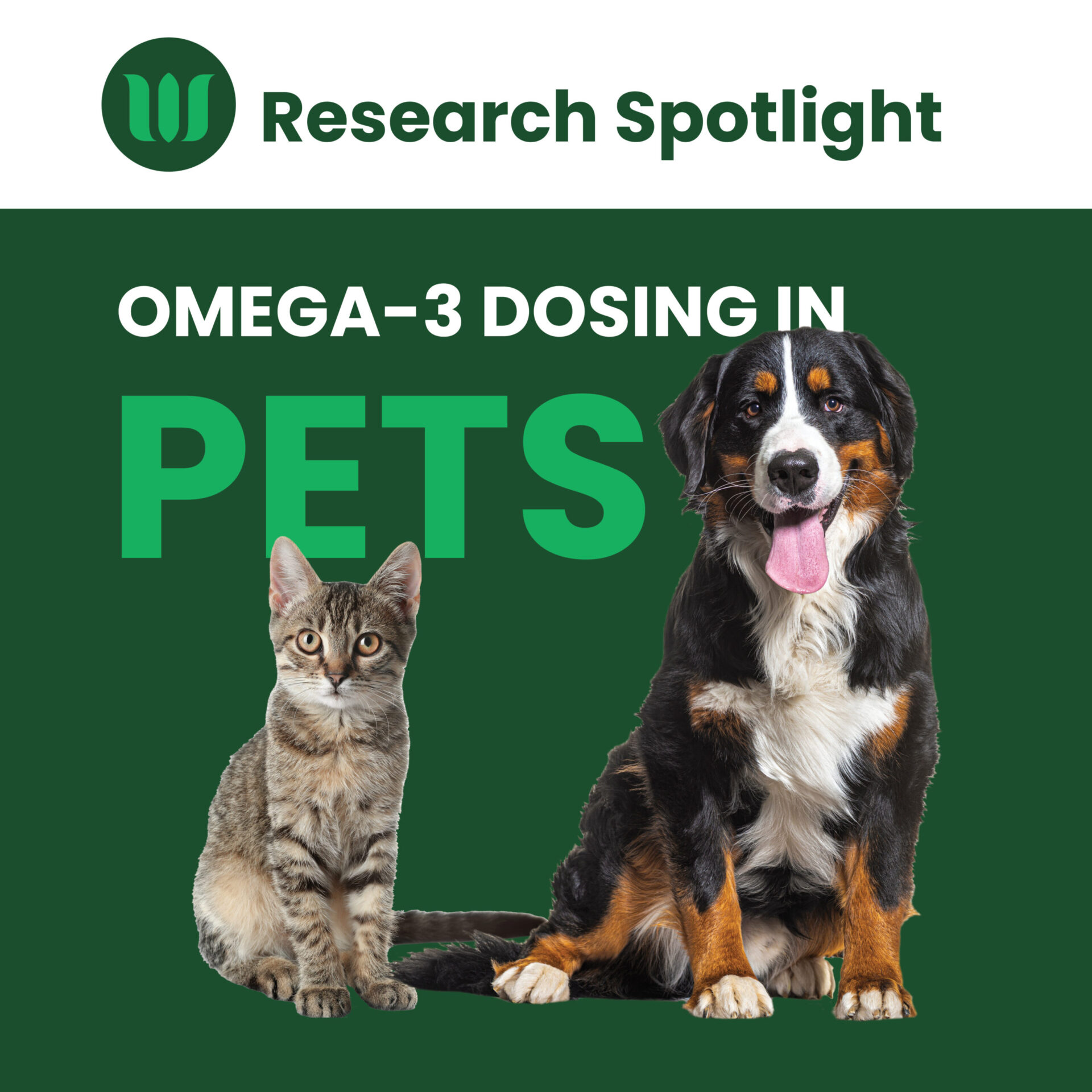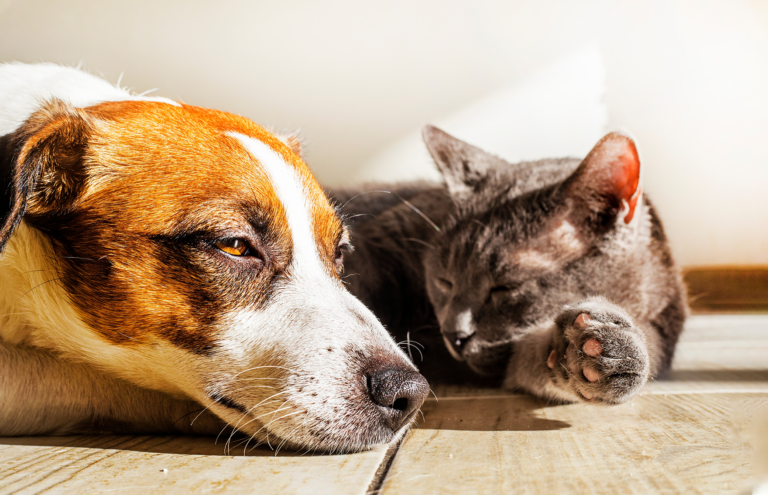Omega-3 Dosing in Pets
About this PDF
As part of the Research Spotlight series on WholisticMatters, “Omega-3 Dosing in Pets” highlights the need for including omega-3 fatty acids in the diet of both dogs and cats, as well as the benefits associated with the omega-3 fatty acids eicosapentaenoic acid (EPA) and docosahexaenoic acid (DHA). Because omega-3 fatty acids are not synthesized in sufficient quantities in the body and conversion remains inefficient or nonexistent, providing DHA and EPA through the diet is very important. They have been demonstrated to help improve specific conditions often seen in dogs and cats and are essential for brain development in both puppies and kittens.
Targeting a safe and efficacious dose is vital to achieving benefits in cats and dogs. The minimum amount of EPA and DHA recommended for growth and reproduction is 10 mg/100 kcal for dogs and 3 mg/100 kcal for cats. Other dosage recommendations to achieve benefits vary depending on the condition, ranging from 69 mg/kg up to 810 mg/kg for dogs with osteoarthritis and heart failure, respectively.
- Biagi G., M.A.L., Cocchi M., Mordenti A. The role of dietary omega-3 and omega-6 essential fatty acids in the nutrition of dogs and cats: a review. Progress in Nutrition 6(2004).
- Dunbar, B.L. & Bauer, J.E. Conversion of Essential Fatty Acids by Delta 6-Desaturase in Dog Liver Microsomes. The Journal of nutrition 132, 1701S-1703S (2002).
- Sinclair, A.J., McLean, J.G. & Monger, E.A. Metabolism of linoleic acid in the cat. Lipids 14, 932-936 (1979).
- Freeman, L.M., et al. Nutritional alterations and the effect of fish oil supplementation in dogs with heart failure. Journal of veterinary internal medicine 12, 440-448 (1998).
- Mehler SJ, May LR, King C, Harris WS, Shah Z. A prospective, randomized, double blind, placebo-controlled evaluation of the effects of eicosapentaenoic acid and docosahexaenoic acid on the clinical signs and erythrocyte membrane polyunsaturated fatty acid concentrations in dogs with osteoarthritis. Prostaglandins Leukot Essent Fatty Acids. 2016 Jun;109:1-7.
- Sarrazin, J.-F., et al. Reduced Incidence of Vagally Induced Atrial Fibrillation and Expression Levels of Connexins by n-3 Polyunsaturated Fatty Acids in Dogs. Journal of the American College of Cardiology 50, 1505-1512 (2007).
- Ramadeen, A., et al. Docosahexaenoic acid, but not eicosapentaenoic acid, supplementation reduces vulnerability to atrial fibrillation. Circulation. Arrhythmia and electrophysiology 5, 978-983 (2012).
- Smith, C.E., Freeman, L.M., Rush, J.E., Cunningham, S.M. & Biourge, V. Omega-3 fatty acids in Boxer dogs with arrhythmogenic right ventricular cardiomyopathy. Journal of veterinary internal medicine 21, 265-273 (2007).
- Mueller, R.S., et al. Effect of omega-3 fatty acids on canine atopic dermatitis. The Journal of small animal practice 45, 293-297 (2004).
- Müller, M.R., et al. Evaluation of cyclosporine-sparing effects of polyunsaturated fatty acids in the treatment of canine atopic dermatitis. Veterinary journal (London, England : 1997) 210, 77-81 (2016).
- Logas D, K.G. Double-blinded crossover study with marine oil supplementation containing high dose eicosapentaenoic
- acid for the treatment of canine pruritic skin disease. Veterinary Dermatology 5, 99-104 (1994).
- Abba, C., Mussa, P.P., Vercelli, A. & Raviri, G. Essential fatty acids supplementation in different-stage atopic dogs fed on a controlled diet. Journal of animal physiology and animal nutrition 89, 203-207 (2005).
- Witzel-Rollins, A., et al. Non-controlled, open-label clinical trial to assess the effectiveness of a dietetic food on pruritus and dermatologic scoring in atopic dogs. BMC Vet Res 15, 220-220 (2019).
- Combarros, D., et al. A prospective, randomized, double blind, placebo-controlled evaluation of the effects of an n-3 essential fatty acids supplement (Agepi® ω3) on clinical signs, and fatty acid concentrations in the erythrocyte membrane, hair shafts and skin surface of dogs with poor quality coats. Prostaglandins, leukotrienes, and essential fatty acids 159, 102140 (2020).
- Officials, A.o.A.F.C. Model Regulations for Pet Food and Specialty; Pet Food Under the Model Bill. 2017 Official Publication, 105-232 (2017).





